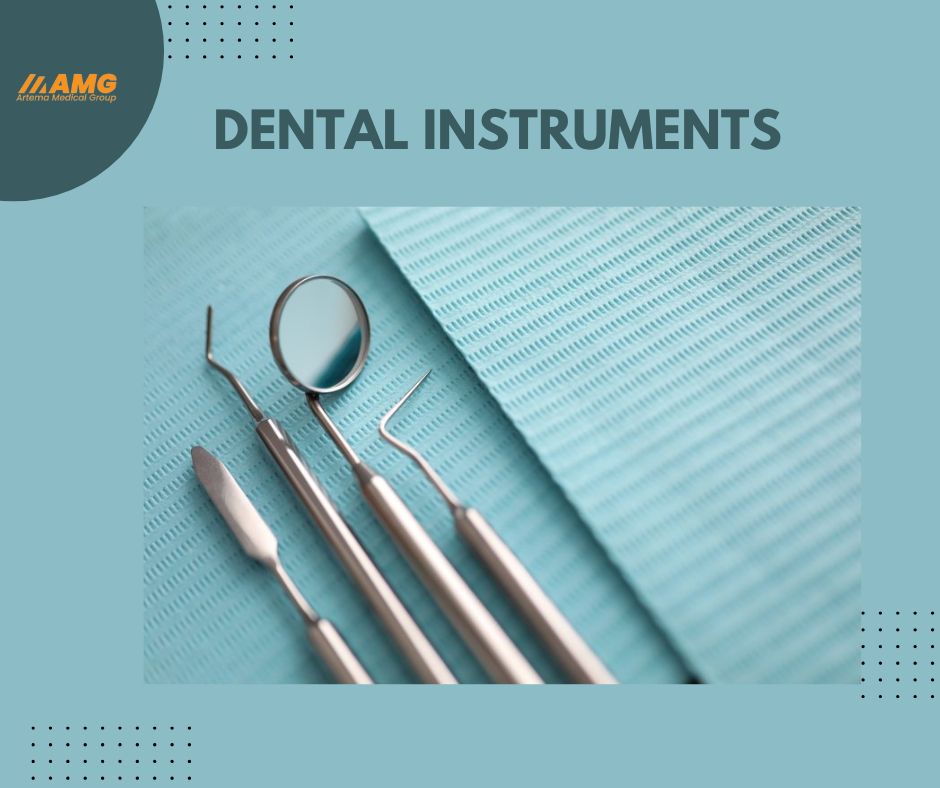Dental instruments are specialized tools used by dental professionals to examine, diagnose, treat, and maintain oral health. These instruments are designed to perform a variety of functions, from removing plaque and tartar to extracting teeth and restoring damaged tissues. Modern dental procedures rely on high-quality instruments to ensure precision, hygiene, and patient comfort.
In this article, we will explore the types, uses, and care of dental instruments and how they contribute to maintaining optimal oral health.
Categories of Dental Instruments
-
Diagnostic Instruments
-
These tools help examine the oral cavity and identify dental issues like cavities, gum disease, or misaligned teeth.
-
Examples:
-
Mouth Mirror: Used to view hard-to-reach areas and reflect light inside the mouth.
-
Explorer/Probe: A pointed instrument for detecting cavities, cracks, or calculus.
-
Periodontal Probe: Measures pocket depth between teeth and gums to assess gum health.
-
-
-
Preventive Instruments
-
These instruments are used during routine cleanings to remove plaque and prevent dental issues.
-
Examples:
-
Scaler: Removes plaque and tartar from teeth surfaces.
-
Curette: Cleans the root surfaces and removes deep tartar buildup.
-
Polishing Cup: Smooths teeth after cleaning to give a shiny finish.
-
-
-
Surgical Instruments
-
Dental surgeries require precision tools to extract teeth, manage soft tissues, or implant devices.
-
Examples:
-
Forceps: Used to extract teeth during oral surgeries.
-
Elevators: Loosen teeth before extraction.
-
Scalpel: Cuts soft tissue with minimal trauma during surgeries.
-
-
-
Restorative Instruments
-
Used to repair damaged teeth by placing fillings, crowns, or other restorative materials.
-
Examples:
-
Amalgam Carrier: Transfers filling material to the cavity.
-
Burnisher: Smooths the surface of fillings.
-
Dental Matrix System: Ensures proper contact between adjacent teeth during restoration.
-
-
-
Endodontic Instruments
-
Specialized tools used in root canal treatments to remove infected pulp and seal the canal.
-
Examples:
-
Endodontic Files and Reamers: Clean and shape root canals.
-
Rubber Dam: Isolates the tooth from saliva during treatment.
-
Gutta-Percha Points: Used to fill the root canals.
-
-
-
Orthodontic Instruments
-
Orthodontists use these tools to align and straighten teeth.
-
Examples:
-
Braces and Bands: Correct dental alignment.
-
Wire Cutters: Trim orthodontic wires.
-
Bracket Placement Instruments: Assist in placing braces accurately.
-
-
Uses of Dental Instruments
-
Diagnosis and Examination
-
Diagnostic instruments like mirrors and probes allow the dentist to assess the condition of teeth, gums, and soft tissues.
-
-
Plaque and Tartar Removal
-
Scalers and curettes help remove bacterial deposits, preventing gum disease and tooth decay.
-
-
Tooth Extraction
-
Forceps and elevators are used to safely remove damaged or decayed teeth with minimal pain.
-
-
Restorative Dentistry
-
Instruments like burnishers, amalgam carriers, and spatulas assist in placing and shaping fillings for damaged teeth.
-
-
Orthodontic Treatment
-
Brackets, bands, and other orthodontic tools help correct misaligned teeth and restore a healthy bite.
-
-
Endodontic Therapy (Root Canal)
-
Files, reamers, and rubber dams ensure precise cleaning and filling of infected root canals.
-
Advantages of Using Modern Dental Instruments
-
Improved Precision and Control
-
High-quality dental tools enable dentists to perform procedures accurately, ensuring patient safety.
-
-
Enhanced Patient Comfort
-
Ergonomically designed instruments reduce treatment time and discomfort for patients.
-
-
Hygiene and Sterility
-
Instruments are made from stainless steel or titanium, ensuring they can be sterilized effectively to prevent infections.
-
-
Versatility for Different Procedures
-
A wide range of instruments allows dentists to address multiple dental needs, from cosmetic repairs to oral surgeries.
-
-
Cost-Effective Treatments
-
Reusable dental instruments reduce the need for frequent replacements, making them economical for dental practices.
-
Challenges of Dental Instruments
-
Regular Maintenance Required
-
Instruments need frequent cleaning, sterilization, and sharpening to maintain functionality.
-
-
Risk of Cross-Contamination
-
Failure to follow strict sterilization protocols can lead to infections or disease transmission.
-
-
Specialized Training Needed
-
Dentists and hygienists need proper training to use complex instruments effectively.
-
Care and Maintenance of Dental Instruments
-
Cleaning and Sterilization
-
Instruments must be thoroughly cleaned to remove blood, saliva, and other contaminants after each use. Autoclaving is a standard method to sterilize dental tools.
-
-
Storage and Handling
-
Instruments should be stored in dry, clean trays or cabinets to prevent corrosion and contamination.
-
-
Regular Inspection and Sharpening
-
Instruments like scalers and curettes require routine sharpening to ensure they perform effectively.
-
-
Avoid Mishandling
-
Dropping instruments can cause damage to the blades or tips, reducing their effectiveness and lifespan.
-
Conclusion
Dental instruments are the backbone of effective dental care, playing a crucial role in diagnosing, treating, and maintaining oral health. From routine cleanings to complex surgeries, these instruments ensure that dental procedures are performed with precision, safety, and comfort.
With advancements in technology, dental tools continue to evolve, allowing dentists to offer minimally invasive treatments and faster recovery times. Proper maintenance and handling of these instruments are essential for ensuring patient safety and extending the lifespan of the tools.
By using the right instruments for each procedure, dental professionals can improve patient outcomes, providing high-quality oral care to promote lifelong dental health.




